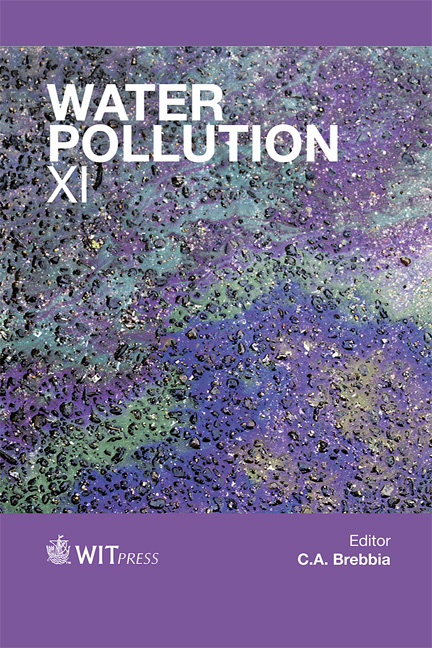Assessment Of Seasonal Variation In Water Quality Of Dal Lake (Kashmir, India) Using Multivariate Statistical Techniques
Price
Free (open access)
Transaction
Volume
164
Pages
12
Page Range
123 - 134
Published
2012
Size
2,066 kb
Paper DOI
10.2495/WP120111
Copyright
WIT Press
Author(s)
I. A. Najar & A. Basheer
Abstract
Seasonal variation in surface water quality of Dal Lake was assessed using multivariate statistical techniques. Water quality data collected from 4 sampling sites during 4 seasons was analysed for 13 parameters. Significant variation (p<0.05) in temperature, pH, EC, Ca, Mg, Na, K, DO, BOD5, COD, PO4-P, NH4- N and NO3-N of sampling sites during different seasons was observed. Cluster analysis grouped 4 sampling sites during 4 seasons into three clusters of similar water quality as relatively less polluted (LP), medium polluted (MP) and highly polluted (HP) sites. The principal component analysis/factor analysis applied to extract and recognize the factors responsible for water quality variations in four seasons of the year resulted in three principal components for each season accounting for 75.78%, 83.25%, 87.33% and 78.96% of total variance for winter, spring, summer and autumn seasons respectively. Parameters like NH4-N, NO3- N, BOD5 and COD have strong positive loading whereas temperature and dissolved oxygen has strong negative loading. Thus, from the principal component/factor analysis it is clear that the domestic wastewaters, agricultural runoff and catchment geology play significant role in water quality variations in the Dal Lake for all the four seasons. Keywords: agricultural runoff, catchment geology, cluster analysis, Dal Lake, factor analysis, Kashmir valley, principal component analysis, seasons, wastewaters, water quality.Keywords
agricultural runoff, catchment geology, cluster analysis, Dal Lake, factor analysis, Kashmir valley, principal component analysis, seasons, wastewaters, water quality





